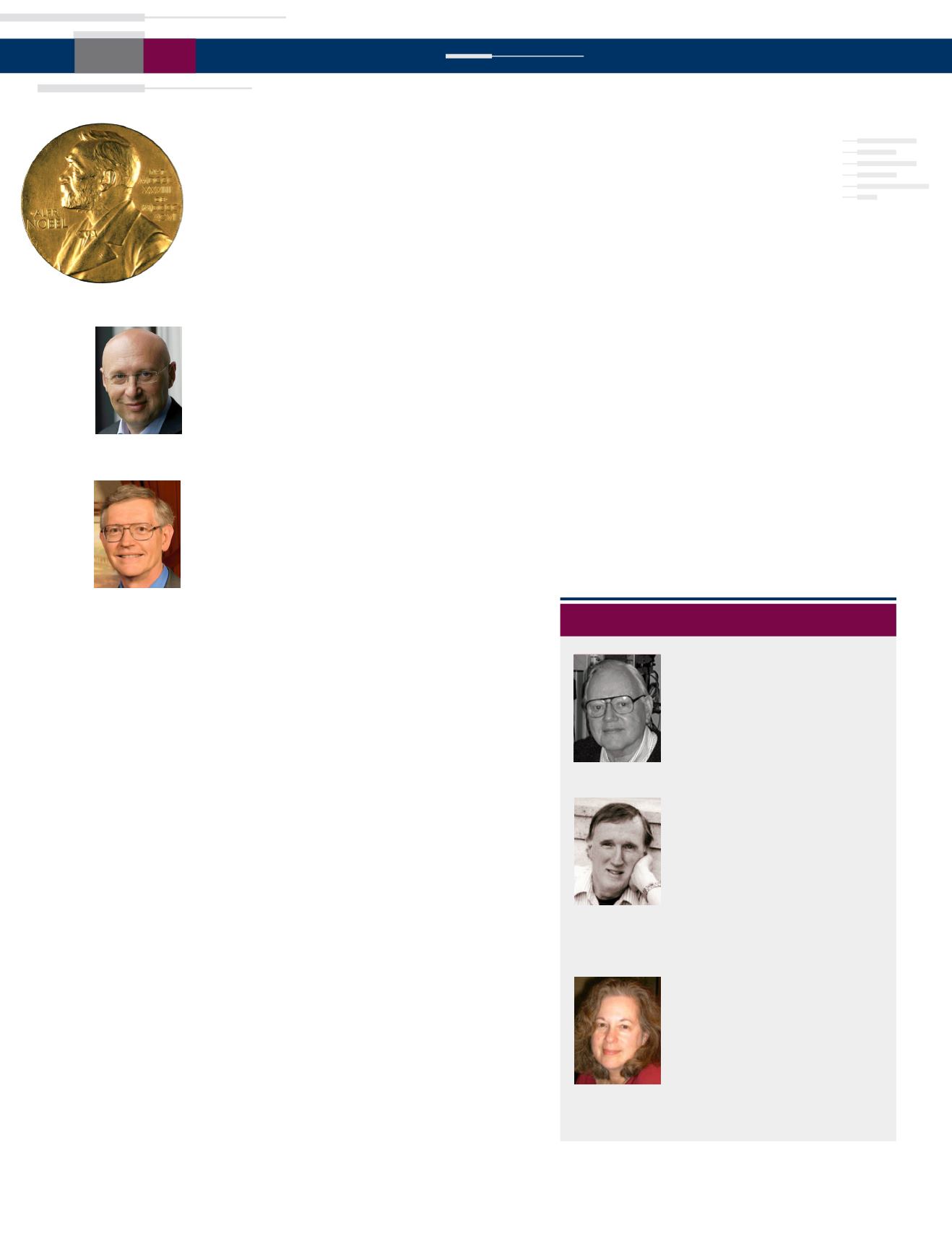
BIOPHYSICAL SOCIETY NEWSLETTER
18
NOVEMBER
2014
Stefan W. Hell
and
William E. Moerner
, along
with Eric Betzig were awarded the 2014 Nobel
Prize in Chemistry "for the development of super-
resolved fluorescence microscopy."
Hell, a professor at the Max Planck Institute of
Biophysical Chemistry, has been a member of the
Biophysical Society since 1998. He received his
PhD from the University of Heidelberg in 1990.
Moerner, a professor in the Chemistry Depart-
ment at Stanford University, joined the Biophysi-
cal Society in 1996. He received his PhD from
Cornell University in 1982.
“I congratulate Hell, Moerner, and Betzig for this
well-deserved award,” said Biophysical Society
President
Dorothy Beckett
. “Their work has given
us the ability to observe biomolecules in action
at high resolution in the cell... For example, we
can now track the cellular distribution of specific
proteins during processes such as transcription,
translation, and cell division. The methods have
applications in diagnosis, treatment, and prog-
nosis of a host of diseases, including cancer and
Alzheimer’s.” Beckett continues, “It is particularly
exciting to see the Nobel awarded for super-
resolution fluorescence microscopy because the
Biophysical Society has a long history of showcas-
ing advances in biological fluorescence both at the
Annual Meeting and in the
Biophysical Journal
.
The powerful techniques created by Hell, Moern-
er, and Betzig have now so permeated biophysics
that it is impossible to attend the Annual Meet-
ing without encountering their application in the
entire range of systems studied by our members."
Biophysical Journal
Associate Editor
Dave Piston
adds, “What unites these three researchers is their
long-standing belief that we can achieve better
clarity in imaging the inner workings of cells. As
evidenced by the awarding of the Nobel Prize, the
advances they have contributed to super-resolu-
tion imaging have been stunning.”
Enrico Gratton
, Chair of the Society’s Fluores-
cence subgroup, shared his enthusiasm for the
award as well. “This is a great recognition by the
Nobel Committee of the transformation that
fluorescence nano-imaging is bringing to biophys-
ics and biology. Super-resolution microscopy has
changed the way we perform experiments, open-
ing new fields of biophysical research.”
The recipients will receive their awards on
December 10th at the Nobel Banquet in
Stockholm, Sweden.
Members in the News
Howard Berg
, Harvard Uni-
versity and Society member
since 1979, and
George Oster
,
University of California, Berke-
ley, and Society member since
1995, have received the 2014
Raymond and Beverly Sackler
International Prize in Biophys-
ics from Tel Aviv University.
Judith Klinman
, University
of California, Berkeley, and
Society member since 1998,
received the National Medal of
Science.
Howard Berg
George Oster
Judith Klinman
Two BPS Members Win 2014 Nobel Prize
in Chemistry
Stefan W. Hell
William E.
Moerner


